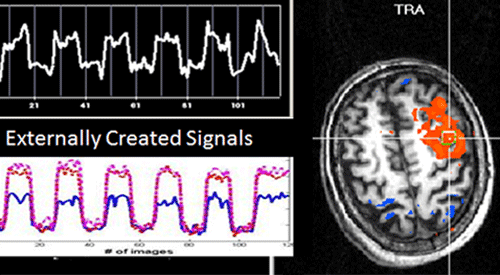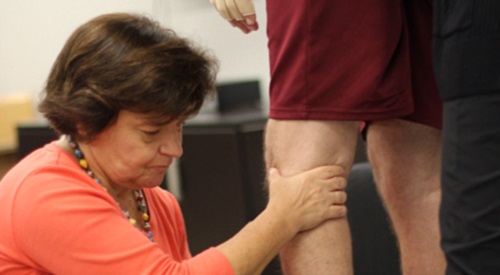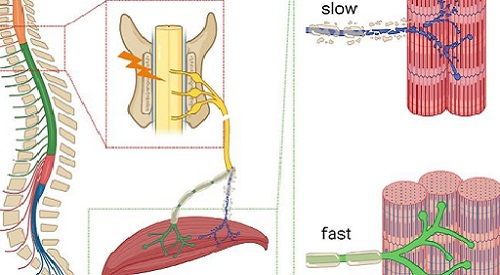RR&D Brain Rehabilitation Research Center (BRRC)
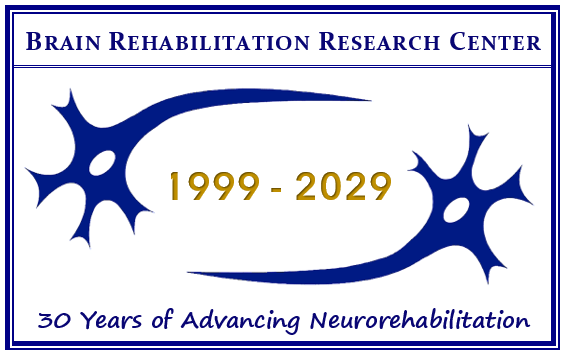
Neurologic injuries or diseases such as stroke and traumatic brain injury (TBI) can impair not only motor control, but also cognition, sleep, and how emotions are expressed and experienced. One or more of these functions can be affected, but even a single functional impairment can significantly decrease quality of life and general health. Further, these impairments exact great financial and personal costs to a Veteran’s family and community as well as to the Veteran.
Neuroplasticity is the ability of the brain to form new connections, which can be used to restore function. How neuroplasticity works, however, is complicated and not fully understood. The BRRC is dedicated to discovering how to harness neuroplasticity to improve neurorehabilition with the goal of restoring impaired functions critical to quality of life—from mobility to sleep—in as many Veterans as possible and as quickly as possible for each Veteran.
Below is a list of recent news, including our latest publications. To see more BRRC publications, often with abstracts or links to complete articles, follow this link to PubMed. Note: The VA neither endorses nor is responsible for information at non-VA websites.
 Dorian Rose, PhD <> Dr. Rose has received another very impressive honor: She has been named a Catherine Worthingham Fellow by the American Physical Therapy Association (APTA). This Fellowship is the highest APTA membership honor and serves as inspiration for all physical therapists to attain professional excellence. Read about Dr. Rose’s work and her many other honors here. (June 2024)
Dorian Rose, PhD <> Dr. Rose has received another very impressive honor: She has been named a Catherine Worthingham Fellow by the American Physical Therapy Association (APTA). This Fellowship is the highest APTA membership honor and serves as inspiration for all physical therapists to attain professional excellence. Read about Dr. Rose’s work and her many other honors here. (June 2024)
 Sutton B. Richmond, PhD <> Dr. Richmond is a new Career Development (CD) investigator who joined the BRRC in May. He completed his predoc and doctoral training in Colorado. As a BRRC CD investigator he will help advance the treatment of neurodegenerative diseases and neurological injuries through his focus on biomechanics, motor control, neurophysiology, and neuroimaging. Read more about Dr. Richmond here. (May 2024)
Sutton B. Richmond, PhD <> Dr. Richmond is a new Career Development (CD) investigator who joined the BRRC in May. He completed his predoc and doctoral training in Colorado. As a BRRC CD investigator he will help advance the treatment of neurodegenerative diseases and neurological injuries through his focus on biomechanics, motor control, neurophysiology, and neuroimaging. Read more about Dr. Richmond here. (May 2024)
 John B. Williamson, PhD, <> Dr. Williamson collaborated with Richard Rubenstein, PhD, of SUNY/Brooklin on a study of traumatic brain injury published in the Journal of Neurotrauma. The editor of the journal noted that the paper contributed to “real progress in using fluid biomarkers to better understand traumatic brain injury” (TBI). This is important to understand and advance treatment for mild to moderate TBI. J Neurotrauma. 2024 Feb;41(3-4):369-392. doi: 10.1089/neu.2022.0479. Read the abstract at PubMed (February 2024)
John B. Williamson, PhD, <> Dr. Williamson collaborated with Richard Rubenstein, PhD, of SUNY/Brooklin on a study of traumatic brain injury published in the Journal of Neurotrauma. The editor of the journal noted that the paper contributed to “real progress in using fluid biomarkers to better understand traumatic brain injury” (TBI). This is important to understand and advance treatment for mild to moderate TBI. J Neurotrauma. 2024 Feb;41(3-4):369-392. doi: 10.1089/neu.2022.0479. Read the abstract at PubMed (February 2024)
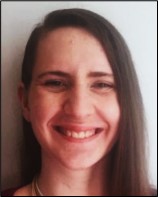 Abigail Waters, PhD <> Dr. Waters is a newer junior investigator who was recruited to the BRRC in 2022. She is first author on a paper in Frontiers of Neuroimaging. The paper reports on regional associations among white matter integrity, neurological and autonomic symptoms, and post-traumatic stress disorder in Veterans with and without a history of loss of consciousness in mild TBI. Drs. Williamson and Lamb were coauthors. .Read the full article at PubMed. (January 2024)
Abigail Waters, PhD <> Dr. Waters is a newer junior investigator who was recruited to the BRRC in 2022. She is first author on a paper in Frontiers of Neuroimaging. The paper reports on regional associations among white matter integrity, neurological and autonomic symptoms, and post-traumatic stress disorder in Veterans with and without a history of loss of consciousness in mild TBI. Drs. Williamson and Lamb were coauthors. .Read the full article at PubMed. (January 2024)
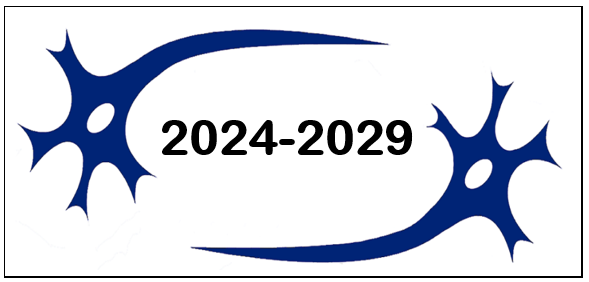 BRRC Renewal <> The BRRC has been renewed for another 5 years! With this renewal, the BRRC will achieve 30 years of advancing neurorehabilitation through research on harnessing neuroplasticity and neural network reorganization by developing, testing, and implementing neurorehabilitation treatments for Veterans with cognitive, motor, and/or emotional neuropsychiatric impairments due to traumatic brain injury (TBI), spinal cord injury (SCI), and/or stroke. (September 2023)
BRRC Renewal <> The BRRC has been renewed for another 5 years! With this renewal, the BRRC will achieve 30 years of advancing neurorehabilitation through research on harnessing neuroplasticity and neural network reorganization by developing, testing, and implementing neurorehabilitation treatments for Veterans with cognitive, motor, and/or emotional neuropsychiatric impairments due to traumatic brain injury (TBI), spinal cord injury (SCI), and/or stroke. (September 2023)
 Clayton Swanson, PhD <> Dr. Swanson, with a colleague from Colorado, reported that gray matter thickness of the motor cortex of the brain and inhibiting activity there were associated with ability of people with multiple sclerosis (MS) to turn their bodies. The data indicate that people with MS may rely on different neural resources to perform movements associated with fall risk. From the article available in PubMed: Consistent with prior results demonstrating an association between the disease severity and cortical thickness of the motor cortex, our results further demonstrate motor cortex atrophy associated with specific characteristics of turning performance [provide] further evidence that motor cortex atrophy influences functional disability, specifically turning performance. (September 2023)
Clayton Swanson, PhD <> Dr. Swanson, with a colleague from Colorado, reported that gray matter thickness of the motor cortex of the brain and inhibiting activity there were associated with ability of people with multiple sclerosis (MS) to turn their bodies. The data indicate that people with MS may rely on different neural resources to perform movements associated with fall risk. From the article available in PubMed: Consistent with prior results demonstrating an association between the disease severity and cortical thickness of the motor cortex, our results further demonstrate motor cortex atrophy associated with specific characteristics of turning performance [provide] further evidence that motor cortex atrophy influences functional disability, specifically turning performance. (September 2023) Kay Waid-Ebbs, PhD <> Dr. Waid-Ebbs and her team reported on the results of one of her VA funded studies that showed precision neurorehabilitation holds significant promise for improving both cognitive function and quality of life for Veterans with mild traumatic brain injury or post traumatic stress disorder. From the article available in PubMed: We were able to administer treatment that was customizable, taking into account the constellation of symptoms for a given individual. Our results showed that [precision neurorehabilitation] could address the unique complexities of mild TBI/PTSD while treating each individual. (July 2023)
Kay Waid-Ebbs, PhD <> Dr. Waid-Ebbs and her team reported on the results of one of her VA funded studies that showed precision neurorehabilitation holds significant promise for improving both cognitive function and quality of life for Veterans with mild traumatic brain injury or post traumatic stress disorder. From the article available in PubMed: We were able to administer treatment that was customizable, taking into account the constellation of symptoms for a given individual. Our results showed that [precision neurorehabilitation] could address the unique complexities of mild TBI/PTSD while treating each individual. (July 2023)
 Dana M. Otzel, PhD <> Dr. Otzel is first author of an article on pharmacologic approaches to prevent muscle atrophy after spinal cord injury. The article was featured in Current Opinion in Pharmacology as a Musculoskeletal Pick for 2022. Expert authors, who are leaders in their field, are invited to write short review articles about recent articles on the specific and highly relevant current topics. Dr. Otzel is a Career Development Awardee, a mentored grant for junior investigators. Two of Dr. Otzel's mentors are Drs. Bose and Yarrow of the BRRC. Read more here. (Feb 2023)
Dana M. Otzel, PhD <> Dr. Otzel is first author of an article on pharmacologic approaches to prevent muscle atrophy after spinal cord injury. The article was featured in Current Opinion in Pharmacology as a Musculoskeletal Pick for 2022. Expert authors, who are leaders in their field, are invited to write short review articles about recent articles on the specific and highly relevant current topics. Dr. Otzel is a Career Development Awardee, a mentored grant for junior investigators. Two of Dr. Otzel's mentors are Drs. Bose and Yarrow of the BRRC. Read more here. (Feb 2023) 
 Russell M. Bauer, PhD (left), and John B. Williamson, PhD <> Drs. Bauer and Williamson each wrote a review on different neurologic conditions published in the same issue of Continuum, which was focused on Behavioral Neurology and Psychology. Continuum provides in-depth clinically-oriented reviews by experts in their fields for practicing neurologists, residents and fellows, and other neurology professionals. Stephen E. Nadeau, MD, and Kenneth Heilman, MD, both previous Medical Directors of the BRRC, also had reviews in the same issue. (Jan 2023)
Russell M. Bauer, PhD (left), and John B. Williamson, PhD <> Drs. Bauer and Williamson each wrote a review on different neurologic conditions published in the same issue of Continuum, which was focused on Behavioral Neurology and Psychology. Continuum provides in-depth clinically-oriented reviews by experts in their fields for practicing neurologists, residents and fellows, and other neurology professionals. Stephen E. Nadeau, MD, and Kenneth Heilman, MD, both previous Medical Directors of the BRRC, also had reviews in the same issue. (Jan 2023)
 Joshua F. Yarrow, PhD (left), and Dana M. Otzel, PhD <> Drs. Yarrow and Otzel and coauthors published an article in the Journal of Applied Physiology about an association between bone loss and reduced blood flow after spinal cord injury (SCI). An image from that article was chosen for the Spotlight Cover of the journal. While the findings are not directly related to neuroplasticity, they have implications for SCI treatment. (Dec 2022).
Joshua F. Yarrow, PhD (left), and Dana M. Otzel, PhD <> Drs. Yarrow and Otzel and coauthors published an article in the Journal of Applied Physiology about an association between bone loss and reduced blood flow after spinal cord injury (SCI). An image from that article was chosen for the Spotlight Cover of the journal. While the findings are not directly related to neuroplasticity, they have implications for SCI treatment. (Dec 2022).

 David J. Clark, ScD (left); Dana M. Otzel, PhD (middle); and Dorian K. Rose, PhD (right) <> Drs. Clark, Otzel, and Rose and their postgraduate mentoree, Sudeshna Chatterjee, and others, including BRRC Director Emeritus, Janis J. Daly, PhD, coauthored an article published by Frontiers in Human Neuroscience that the journal selected as a “Motor Neuro- science Editor’s Pick.” The selection was based on substantial advances in addressing compelling problems. Read more here. (Aug 2022)
David J. Clark, ScD (left); Dana M. Otzel, PhD (middle); and Dorian K. Rose, PhD (right) <> Drs. Clark, Otzel, and Rose and their postgraduate mentoree, Sudeshna Chatterjee, and others, including BRRC Director Emeritus, Janis J. Daly, PhD, coauthored an article published by Frontiers in Human Neuroscience that the journal selected as a “Motor Neuro- science Editor’s Pick.” The selection was based on substantial advances in addressing compelling problems. Read more here. (Aug 2022) Matthew Schiefer, PhD <> Dr. Schiefer and his team authored an article published by Scientific Reports that is among the top 100 articles downloaded from the journal. The article reports on a new way to detect neural signals from the stomach that indicate fullness. The finding advances our understanding of obesity but may also advance the study of responses to neurorehabilitation. As noted in an email to Dr. Schiefer, Scientific Reports “published more than 3,460 neuroscience papers in 2021,” thus an article among the top 100 most downloaded is “an extraordinary achievement.” Read more. (March 2022)
Matthew Schiefer, PhD <> Dr. Schiefer and his team authored an article published by Scientific Reports that is among the top 100 articles downloaded from the journal. The article reports on a new way to detect neural signals from the stomach that indicate fullness. The finding advances our understanding of obesity but may also advance the study of responses to neurorehabilitation. As noted in an email to Dr. Schiefer, Scientific Reports “published more than 3,460 neuroscience papers in 2021,” thus an article among the top 100 most downloaded is “an extraordinary achievement.” Read more. (March 2022)

 Kay Waid-Ebbs, PhD (left), and Dorian K. Rose, PhD (right) <> Drs. Waid-Ebbs and Rose coauthored a paper reporting on a smartphone application for measuring community participation of Veterans with traumatic brain injury (link to abstract at PubMed). This work is important because community participation is one aspect of recovery from conditions like traumatic brain injury, but in order to determine if rehabilitation is effective, there must be a way to measure whether a Veteran is actually improving. Also, Dr. Waid-Ebbs has coauthored two new publications on this same issue of community participation, one in Archives of Physical Medicine and Rehabilitation and one that is in press in the Journal of Health and Social Work. (October 2021)
Kay Waid-Ebbs, PhD (left), and Dorian K. Rose, PhD (right) <> Drs. Waid-Ebbs and Rose coauthored a paper reporting on a smartphone application for measuring community participation of Veterans with traumatic brain injury (link to abstract at PubMed). This work is important because community participation is one aspect of recovery from conditions like traumatic brain injury, but in order to determine if rehabilitation is effective, there must be a way to measure whether a Veteran is actually improving. Also, Dr. Waid-Ebbs has coauthored two new publications on this same issue of community participation, one in Archives of Physical Medicine and Rehabilitation and one that is in press in the Journal of Health and Social Work. (October 2021) Matthew A. Schiefer, PhD <> Dr. Schiefer was one of four members of a team called KnowMore that won the Grand Prize in a codeathon hosted by SPARC (Stimulating Peripheral Activity to Relieve Conditions), a program funded by the National Institutes of Health. The 2021 SPARC FAIR Codeathon competition was open to scientists from anywhere in the world, and the goal of SPARC is to advance bioelectronic medicine. The Grand Prize award included $20,000. The KnowMore team developed an automated knowledge discovery tool that allows SPARC users to visualize potential similarities, differences, and connections between multiple SPARC datasets. Read more. (July 2021)
Matthew A. Schiefer, PhD <> Dr. Schiefer was one of four members of a team called KnowMore that won the Grand Prize in a codeathon hosted by SPARC (Stimulating Peripheral Activity to Relieve Conditions), a program funded by the National Institutes of Health. The 2021 SPARC FAIR Codeathon competition was open to scientists from anywhere in the world, and the goal of SPARC is to advance bioelectronic medicine. The Grand Prize award included $20,000. The KnowMore team developed an automated knowledge discovery tool that allows SPARC users to visualize potential similarities, differences, and connections between multiple SPARC datasets. Read more. (July 2021)
 David J. Clark, ScD <> Dr. Clark has received the highest honor bestowed by the U.S. to outstanding independent early-career scientists and engineers: The Presidential Early Career Award for Scientists and Engineers (PECASE). The PECASE award recognizes contributions to the advancement of science, technology, education, and mathematics (STEM) as demonstrated by scientific leadership, public education, and community outreach. Read more. (August 2019)
David J. Clark, ScD <> Dr. Clark has received the highest honor bestowed by the U.S. to outstanding independent early-career scientists and engineers: The Presidential Early Career Award for Scientists and Engineers (PECASE). The PECASE award recognizes contributions to the advancement of science, technology, education, and mathematics (STEM) as demonstrated by scientific leadership, public education, and community outreach. Read more. (August 2019)
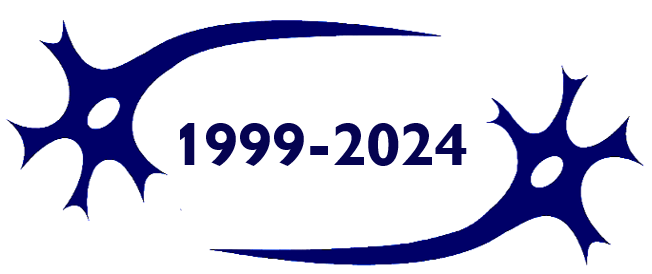
 Dana Otzel, PhD <> Dr. Otzel, a junior BRRC investigator who just completed an RR&D Career Development 1 Award, is a rising star: She has accomplished a feat that even some long-experienced investigators have never accomplished: Having three substantial journal articles published within 6 months. Further, she has authored or coauthored 16 publications in the past 4 years. She is now in the process of submitting a Career Development 2 Award. Her program of research focuses on preserving muscle function and mobility after spinal cord injury (SCI), which address an important obstacle to restoring function: neuromuscular impairment and muscle loss. A list of Dr. Otzel's publications is available at this link to PubMed. (February 2019)
Dana Otzel, PhD <> Dr. Otzel, a junior BRRC investigator who just completed an RR&D Career Development 1 Award, is a rising star: She has accomplished a feat that even some long-experienced investigators have never accomplished: Having three substantial journal articles published within 6 months. Further, she has authored or coauthored 16 publications in the past 4 years. She is now in the process of submitting a Career Development 2 Award. Her program of research focuses on preserving muscle function and mobility after spinal cord injury (SCI), which address an important obstacle to restoring function: neuromuscular impairment and muscle loss. A list of Dr. Otzel's publications is available at this link to PubMed. (February 2019)
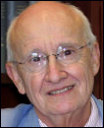 Kenneth Heilman, MD <> Dr. Heilman, who was the initial Medical Director of the BRRC when it was first funded by the VA in 1999, is an Air Force Veteran who served in Vietnam as well as a world-renowned neurologist. He was recently recognized by the VA Office of Research and Development (ORD) as a VA Researcher Who Served. In an interview about this, Dr. Heilman noted that the “most important motivational factors are finding joy in learning, being curious and showing an eagerness to investigate, working hard and persisting until you are successful, having empathy, and trying to make the world a better place.” That is also a great description of what it takes to pursue the difficult task of learning how to harness the brain’s neuroplasticity to restore the most function for the most Veterans in the least time when they are impaired by neurologic illnesses or diseases such as stroke or traumatic brain injury. The complete interview of Dr. Heilman is available at this link to the April 10, 2018, edition of VA Researchers Who Served at the VA ORD website. (April 2018)
Kenneth Heilman, MD <> Dr. Heilman, who was the initial Medical Director of the BRRC when it was first funded by the VA in 1999, is an Air Force Veteran who served in Vietnam as well as a world-renowned neurologist. He was recently recognized by the VA Office of Research and Development (ORD) as a VA Researcher Who Served. In an interview about this, Dr. Heilman noted that the “most important motivational factors are finding joy in learning, being curious and showing an eagerness to investigate, working hard and persisting until you are successful, having empathy, and trying to make the world a better place.” That is also a great description of what it takes to pursue the difficult task of learning how to harness the brain’s neuroplasticity to restore the most function for the most Veterans in the least time when they are impaired by neurologic illnesses or diseases such as stroke or traumatic brain injury. The complete interview of Dr. Heilman is available at this link to the April 10, 2018, edition of VA Researchers Who Served at the VA ORD website. (April 2018)
 Kay Waid-Ebbs, PhD <> A recent publication that Dr. Waid-Ebbs co-authored describes her study in which two ways of determining level of participation in Veterans with mild traumatic brain injury are compared: Community Reintegration of Service Members (CRIS) and the Participation Assessment with Recombined Tools-Objective (PART-O). Data showed that the CRIS has greater potential to detect a change in participation but has a much greater administrative burden. Although authors recommended CRIS be used instead of PART-O, “a short form of the CRIS could be useful if it maintains psychometric performance while decreasing administrative burden.” This work is important because, “when implementing patient-centered interventions, how people perceive their limitation and their satisfaction are crucial for setting rehabilitation goals.” Link to PubMed abstract. (Feb 2018)
Kay Waid-Ebbs, PhD <> A recent publication that Dr. Waid-Ebbs co-authored describes her study in which two ways of determining level of participation in Veterans with mild traumatic brain injury are compared: Community Reintegration of Service Members (CRIS) and the Participation Assessment with Recombined Tools-Objective (PART-O). Data showed that the CRIS has greater potential to detect a change in participation but has a much greater administrative burden. Although authors recommended CRIS be used instead of PART-O, “a short form of the CRIS could be useful if it maintains psychometric performance while decreasing administrative burden.” This work is important because, “when implementing patient-centered interventions, how people perceive their limitation and their satisfaction are crucial for setting rehabilitation goals.” Link to PubMed abstract. (Feb 2018)
 David J. Clark, ScD <> Dr. Clark is first author on a publication he coauthored with students he has mentored and others on the challenge of adaptive walking ability in those with motor impairments. The perceived difficulty is the measure that is currently used, but that relies on self-report of those with impairments and is a subjective measure. Dr. Clark and his team showed that skin conductance on the palm of the hand has potential as an objective way to measure stress in this population. This is original and groundbreaking work because walking adaptation is required to deal with tasks like using stairs, picking up an object from the floor, or stepping over obstacles. In persons with motor impairments, these challenges have been linked to avoidance of community mobility and thus can decrease quality of life in Veterans with walking impairments caused by neurologic injury or disease. Link to PubMed abstract. (Feb 2018)
David J. Clark, ScD <> Dr. Clark is first author on a publication he coauthored with students he has mentored and others on the challenge of adaptive walking ability in those with motor impairments. The perceived difficulty is the measure that is currently used, but that relies on self-report of those with impairments and is a subjective measure. Dr. Clark and his team showed that skin conductance on the palm of the hand has potential as an objective way to measure stress in this population. This is original and groundbreaking work because walking adaptation is required to deal with tasks like using stairs, picking up an object from the floor, or stepping over obstacles. In persons with motor impairments, these challenges have been linked to avoidance of community mobility and thus can decrease quality of life in Veterans with walking impairments caused by neurologic injury or disease. Link to PubMed abstract. (Feb 2018)
Archive
(includes BRRC alumni investigators who are retired or
are now affiliated with other VAMCs or universities)

 Dorian K. Rose, PhD, (left) and Stephen E. Nadeau, MD (right) <> A recent publication by Drs. Rose and Nadeau with others about research conducted to determine the effect of number of training sessions on rehabilitation outcome received kudos from the journal’s editor: “Understanding the optimal dose of a given therapeutic intervention (frequency, intensity, duration, and timing) is critical to the implementation of evidence-based physical therapist practice, and more research such as the work done by Rose et al is needed to inform clinical practice guidelines and the decisions that rehabilitation professionals and their patients make.” This paper was also awarded the University of Florida 2018 Dean's Citation Paper Award for outstanding publication. Link to PubMed abstract. (Nov 2017)
Dorian K. Rose, PhD, (left) and Stephen E. Nadeau, MD (right) <> A recent publication by Drs. Rose and Nadeau with others about research conducted to determine the effect of number of training sessions on rehabilitation outcome received kudos from the journal’s editor: “Understanding the optimal dose of a given therapeutic intervention (frequency, intensity, duration, and timing) is critical to the implementation of evidence-based physical therapist practice, and more research such as the work done by Rose et al is needed to inform clinical practice guidelines and the decisions that rehabilitation professionals and their patients make.” This paper was also awarded the University of Florida 2018 Dean's Citation Paper Award for outstanding publication. Link to PubMed abstract. (Nov 2017)
 Russell M. Bauer, PhD <> Dr. Bauer, who has received numerous awards for teaching and student mentoring, has coauthored with two of his students and others an article on chronic traumatic encephalopathy (CET), or repetitive brain trauma, that was published in JAMA Neurology. The article includes a fascinating timeline graphic of notable events and publications in the history of CET research, which began in 1928 with a description of “punch drunk” clinical syndrome in retired boxers. The 2015 film, Concussion, was about the doctor who first discovered CET in a football player. Dr. Bauer has been a mentor of Mr. Asken since 2014 and of Ms. Sullan from 2014 to 2016. Full citation: Asken BM, Sullan MJ, DeKosky ST, Jaffee MS, Bauer RM. Research gaps and controversies in chronic traumatic encephalopathy: a review. JAMA Neurol. 2017;74(10):1255-1262. The article is available at this link to JAMA Neurology. (Oct 2017)
Russell M. Bauer, PhD <> Dr. Bauer, who has received numerous awards for teaching and student mentoring, has coauthored with two of his students and others an article on chronic traumatic encephalopathy (CET), or repetitive brain trauma, that was published in JAMA Neurology. The article includes a fascinating timeline graphic of notable events and publications in the history of CET research, which began in 1928 with a description of “punch drunk” clinical syndrome in retired boxers. The 2015 film, Concussion, was about the doctor who first discovered CET in a football player. Dr. Bauer has been a mentor of Mr. Asken since 2014 and of Ms. Sullan from 2014 to 2016. Full citation: Asken BM, Sullan MJ, DeKosky ST, Jaffee MS, Bauer RM. Research gaps and controversies in chronic traumatic encephalopathy: a review. JAMA Neurol. 2017;74(10):1255-1262. The article is available at this link to JAMA Neurology. (Oct 2017)
 Kevin K.W. Wang, PhD <> Dr. Wang coauthored with a large group of investigators from all over the country an important paper on biomarkers of traumatic brain injury (TBI). The paper was accompanied by an editorial noting: “[These investigators] shine much-needed light (here, laser light) on a common neurologic conundrum, namely, how to determine who is hurt, who is healing, and who is healthy after head injury. . . . The technology advance [in this report] takes advantage of a novel laser-based bioassay with an unwieldly name: enhanced immunoassay multi-arrayed fiberoptics with rolling circle amplification (a-EIMAF).” Full citation: Rubenstein R, Chang B, Yue JK, Chiu A, Winkler EA, Puccio AM, Diaz-Arrastia R, Yuh EL, Mukherjee P, Valadka AB, Gordon WA, Okonkwo DO, Davies P, Agarwal S, Lin F, Sarkis G, Yadikar H, Yang Z, Manley GT, Wang KKW et al. Comparing plasma phospho tau, total tau, and phospho tau-total tau ratio as acute and chronic traumatic brain injury biomarkers. JAMA Neurol. 2017 Sep 1;74(9):1063-1072. The article is available at this link to JAMA Neurology. (Sept 2017)
Kevin K.W. Wang, PhD <> Dr. Wang coauthored with a large group of investigators from all over the country an important paper on biomarkers of traumatic brain injury (TBI). The paper was accompanied by an editorial noting: “[These investigators] shine much-needed light (here, laser light) on a common neurologic conundrum, namely, how to determine who is hurt, who is healing, and who is healthy after head injury. . . . The technology advance [in this report] takes advantage of a novel laser-based bioassay with an unwieldly name: enhanced immunoassay multi-arrayed fiberoptics with rolling circle amplification (a-EIMAF).” Full citation: Rubenstein R, Chang B, Yue JK, Chiu A, Winkler EA, Puccio AM, Diaz-Arrastia R, Yuh EL, Mukherjee P, Valadka AB, Gordon WA, Okonkwo DO, Davies P, Agarwal S, Lin F, Sarkis G, Yadikar H, Yang Z, Manley GT, Wang KKW et al. Comparing plasma phospho tau, total tau, and phospho tau-total tau ratio as acute and chronic traumatic brain injury biomarkers. JAMA Neurol. 2017 Sep 1;74(9):1063-1072. The article is available at this link to JAMA Neurology. (Sept 2017)
 Damon Lamb, PhD <> Dr. Lamb is part of a joint project involving researchers at the Department of Veterans Affairs and the University of Florida that is funded under the "Targeted Neuroplasticity Training" program of the Defense Advanced Research Projects Agency, or DARPA. They are investigating electrical stimulation of peripheral nerves to strengthen neural connections in the brain. Dr. Lamb will be exploring which neural pathways in the brain are activated by stimulation of the vagus nerve and how that might enhance cognition. Dr. Lamb noted that the BRRC also has related ongoing research specifically investigating how this approach might be used to improve symptoms of post-traumatic stress disorder in Veterans. More details about the research can be found at this web page. (April 2017)
Damon Lamb, PhD <> Dr. Lamb is part of a joint project involving researchers at the Department of Veterans Affairs and the University of Florida that is funded under the "Targeted Neuroplasticity Training" program of the Defense Advanced Research Projects Agency, or DARPA. They are investigating electrical stimulation of peripheral nerves to strengthen neural connections in the brain. Dr. Lamb will be exploring which neural pathways in the brain are activated by stimulation of the vagus nerve and how that might enhance cognition. Dr. Lamb noted that the BRRC also has related ongoing research specifically investigating how this approach might be used to improve symptoms of post-traumatic stress disorder in Veterans. More details about the research can be found at this web page. (April 2017)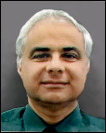 Mo H. Modarres, PhD <> Dr. Modarres has received a VA grant to study neuromarkers of traumatic brain injury and post traumatic stress disorder (PTSD) that he discovered. The neuromarkers are derived by a sophisticated analysis of brain waves recorded by electroencephalography during sleep by means an automatic, computerized algorithm. Dr. Modarres has filed a patent as sole inventor for the method of obtaining the neuromarker for PTSD. (March 2017)
Mo H. Modarres, PhD <> Dr. Modarres has received a VA grant to study neuromarkers of traumatic brain injury and post traumatic stress disorder (PTSD) that he discovered. The neuromarkers are derived by a sophisticated analysis of brain waves recorded by electroencephalography during sleep by means an automatic, computerized algorithm. Dr. Modarres has filed a patent as sole inventor for the method of obtaining the neuromarker for PTSD. (March 2017)
 Carolynn Patten, PhD <> Dr. Patten was inducted by the American Physical Therapy Association (APTA) as a Catherine Worthingham APTA Fellow (FAPTA) during the APTA annual conference in June 2016 in Nashville, Tennessee. The Fellowship recognizes significant contributions to the field of physical therapy through leadership, influence, and achievements for over 15 years. More information about Dr. Patten and her award is available here. (June 2016)
Carolynn Patten, PhD <> Dr. Patten was inducted by the American Physical Therapy Association (APTA) as a Catherine Worthingham APTA Fellow (FAPTA) during the APTA annual conference in June 2016 in Nashville, Tennessee. The Fellowship recognizes significant contributions to the field of physical therapy through leadership, influence, and achievements for over 15 years. More information about Dr. Patten and her award is available here. (June 2016)
 Stephen E. Nadeau, MD <> Dr. Nadeau will chair a symposium at the 44th Annual Meeting of the International Neuropsychological Society (INS) in Boston in February. As author of the book, The Neural Architecture of Grammar (MIT Press), in which he laid out his comprehensive, neurally-based theory of language function, Dr. Nadeau will bring that expertise to bear in chairing the symposium: Chaotic Order, Language Connectivity, and a Generalizing Treatment of Aphasia. Aphasia, an impairment in any form of language use caused by brain injury or illness, often severely affects the ability to communicate, which can be devastating. Stroke alone causes aphasia in approximately 80,000 persons each year. (February 2016)
Stephen E. Nadeau, MD <> Dr. Nadeau will chair a symposium at the 44th Annual Meeting of the International Neuropsychological Society (INS) in Boston in February. As author of the book, The Neural Architecture of Grammar (MIT Press), in which he laid out his comprehensive, neurally-based theory of language function, Dr. Nadeau will bring that expertise to bear in chairing the symposium: Chaotic Order, Language Connectivity, and a Generalizing Treatment of Aphasia. Aphasia, an impairment in any form of language use caused by brain injury or illness, often severely affects the ability to communicate, which can be devastating. Stroke alone causes aphasia in approximately 80,000 persons each year. (February 2016)

 Anastasia A. Bohsali, PhD (left), and
Anastasia A. Bohsali, PhD (left), and
Diane L. Kendall, PhD, CCC-SLP (right)
Dr. Bohsali is a current BRRC Career Development Awardee who will be presenting at Dr. Nadeau’s symposium (see above news item) as will Dr. Kendall, a BRRC Career Development Awardee from 2000 to 2008. Dr. Kendall is now a researcher at the VAMC Puget Sound in Washington. (February 2016) )
 Russell M. Bauer, PhD, ABPP <> For his work at the University of Florida as Director of Clinical Training for the Department of Clinical and Health Psychology, Dr. Bauer received an award for Outstanding Service from the Council of University Directors of Clinical Psychology. Among other achievements, the award recognizes innovation in building and measuring program quality and achieving good outcomes for graduates. The VA has its own training program, the Career Development Program funded by the Office of Research and Development. (August 2015)
Russell M. Bauer, PhD, ABPP <> For his work at the University of Florida as Director of Clinical Training for the Department of Clinical and Health Psychology, Dr. Bauer received an award for Outstanding Service from the Council of University Directors of Clinical Psychology. Among other achievements, the award recognizes innovation in building and measuring program quality and achieving good outcomes for graduates. The VA has its own training program, the Career Development Program funded by the Office of Research and Development. (August 2015)
 Dorian K. Rose, PhD <> The American Heart Association has awarded Dr. Rose a $154,000 grant to study a novel rehabilitation intervention: a backward walking training program. Dr. Rose and her co-investigators, which include another BRRC investigator, Dr. Carolynn Patten, will examine the potential of this program to increase both mobility and self-efficacy of stroke survivors and thus improve their quality of life and decrease their risk of recurrent stroke. Self-efficacy is defined as what people believe about their ability to influence events that affect their lives (social learning theory). As part of a collaboration, the research will be conducted at Brooks Rehabilitation, a BRRC affiliate, in Jacksonville, Florida. (August 2015)
Dorian K. Rose, PhD <> The American Heart Association has awarded Dr. Rose a $154,000 grant to study a novel rehabilitation intervention: a backward walking training program. Dr. Rose and her co-investigators, which include another BRRC investigator, Dr. Carolynn Patten, will examine the potential of this program to increase both mobility and self-efficacy of stroke survivors and thus improve their quality of life and decrease their risk of recurrent stroke. Self-efficacy is defined as what people believe about their ability to influence events that affect their lives (social learning theory). As part of a collaboration, the research will be conducted at Brooks Rehabilitation, a BRRC affiliate, in Jacksonville, Florida. (August 2015)
 William S. Perlstein, PhD <> Dr. Perlstein’s innovative combination of direct-attention and metacognitive training for Veterans with traumatic brain injury (TBI) will be tested in a new VA research study. The 2-year study will assess the impact of his novel approach to rehabilitation on (1) cognitively complex activities such as activities of daily living and life participation and (2) neurocognitive abilities related to attentional control. Also, a form of electroencephalography (high-density, scalp-recorded brain electrical activity) will detect changes in brain function during the study to determine if there are any neurological markers or signs of changes in the brain (neuroplasticity) that can be used to measure the results of this cognitive rehabilitation approach on brain function. (July 2015)
William S. Perlstein, PhD <> Dr. Perlstein’s innovative combination of direct-attention and metacognitive training for Veterans with traumatic brain injury (TBI) will be tested in a new VA research study. The 2-year study will assess the impact of his novel approach to rehabilitation on (1) cognitively complex activities such as activities of daily living and life participation and (2) neurocognitive abilities related to attentional control. Also, a form of electroencephalography (high-density, scalp-recorded brain electrical activity) will detect changes in brain function during the study to determine if there are any neurological markers or signs of changes in the brain (neuroplasticity) that can be used to measure the results of this cognitive rehabilitation approach on brain function. (July 2015)
 Janis J. Daly, PT, PhD <> An article reporting groundbreaking work Dr. Daly directed was published by the Archives of Physical Medicine and Rehabilitation. In conjunction with the article, the journal also published an editorial about the significance of the article and a 12-minute interview with Dr. Daly about the work. The study showed arm and hand functions severely impaired by stroke can improve significantly by intensive treatment, even if treatment begins more than 6 months after the stroke, when no further spontaneous recovery would occur. The complete article is available here, and it was also featured in a recent BRRC newsletter (accessible version here). (June 2015)
Janis J. Daly, PT, PhD <> An article reporting groundbreaking work Dr. Daly directed was published by the Archives of Physical Medicine and Rehabilitation. In conjunction with the article, the journal also published an editorial about the significance of the article and a 12-minute interview with Dr. Daly about the work. The study showed arm and hand functions severely impaired by stroke can improve significantly by intensive treatment, even if treatment begins more than 6 months after the stroke, when no further spontaneous recovery would occur. The complete article is available here, and it was also featured in a recent BRRC newsletter (accessible version here). (June 2015)
 Carolynn Patten, PT, PhD <> Dr. Patten received the prestigious University of Florida (UF) Research Foundation Professorship for 2015-2018 and has also been named winner of the Linda Crane Research Award from the Florida Physical Therapy Association. The UF award is based on recent research accomplishments such as publications in scholarly journals, external funding, honors and awards, and development of intellectual property. The Linda Crane Research Award consists of a grant to conduct a clinical outcome study in any area of physical therapy that relates to the American Physical Therapy Association Guide to Physical Therapy Practice. (April 2015)
Carolynn Patten, PT, PhD <> Dr. Patten received the prestigious University of Florida (UF) Research Foundation Professorship for 2015-2018 and has also been named winner of the Linda Crane Research Award from the Florida Physical Therapy Association. The UF award is based on recent research accomplishments such as publications in scholarly journals, external funding, honors and awards, and development of intellectual property. The Linda Crane Research Award consists of a grant to conduct a clinical outcome study in any area of physical therapy that relates to the American Physical Therapy Association Guide to Physical Therapy Practice. (April 2015)
Below is an example of the kind of imaging used by BRRC investigators to study the effects of injury to the brain on function and the effects of treatment to restore function.
